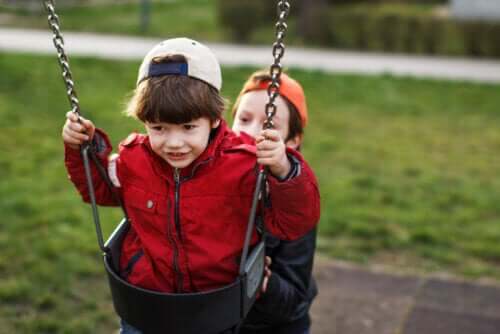Teaching Children to Live in Harmony

The fact that we live in an individualistic society isn’t shocking. On the other hand, the diversity you see in classrooms grows every day. Because of this, there’s a need to adapt to this new social and cultural context and teach children to live in harmony.

Why and how should we teach children to live in harmony?
Nowadays, you could say there are less barriers between us. The globalization, the evolution of communication, transportation and social media, among other things, could make it easier to be in contact with each other and understand different societies and cultures around the planet, as well as among the members of a small community, such as a school.
However, conflicts are part of humankind’s history. As a good reflection of every society, in educational institutions you can see conflicts and lack of understanding happen every day. Therefore, there’s an alarming amount of evidence regarding the need for action from education centers in order to face coexistence problems.
Thus, children need to learn to live in harmony to build societies with a culture of dialogue and peace. Education centers are responsible for teaching the adults of tomorrow to live among each other with respect and acceptance.
Teaching children to live in harmony is important to establish coexistence rules in educational centers. These rules should be clear and coherent, both at home and at school, and include setting boundaries.
Also, children need to know about conflicts and learn to develop a healthy way to respond to issues as a group. This is one of the best strategies for any coexistence project.

Learning to live together in peace
Jacques Delors developed four pillars of education. One of them is learning to live together and with others.
Although there has always been conflicts in the history of humankind, Delors asks if it’s possible to educate people to avoid conflicts or solve them peacefully, promoting learning about others, their cultures and spirit.
Based on this, he reflects on the fact that to educate children on how to live in harmony, it’s not enough to organize contact and communication between different groups. For example, in educational centers with children of different backgrounds or religions.
For Delors, the key is equality. Children should relate to others based on equality and work on common goals.
In Social Sciences and Education, conflict and hatred comes naturally when two or more groups with differences compete against each other. If students start working on common goals, they’ll manage to avoid conflicts. This will teach them how to work together and to live in harmony.
The fact that we live in an individualistic society isn’t shocking. On the other hand, the diversity you see in classrooms grows every day. Because of this, there’s a need to adapt to this new social and cultural context and teach children to live in harmony.

Why and how should we teach children to live in harmony?
Nowadays, you could say there are less barriers between us. The globalization, the evolution of communication, transportation and social media, among other things, could make it easier to be in contact with each other and understand different societies and cultures around the planet, as well as among the members of a small community, such as a school.
However, conflicts are part of humankind’s history. As a good reflection of every society, in educational institutions you can see conflicts and lack of understanding happen every day. Therefore, there’s an alarming amount of evidence regarding the need for action from education centers in order to face coexistence problems.
Thus, children need to learn to live in harmony to build societies with a culture of dialogue and peace. Education centers are responsible for teaching the adults of tomorrow to live among each other with respect and acceptance.
Teaching children to live in harmony is important to establish coexistence rules in educational centers. These rules should be clear and coherent, both at home and at school, and include setting boundaries.
Also, children need to know about conflicts and learn to develop a healthy way to respond to issues as a group. This is one of the best strategies for any coexistence project.

Learning to live together in peace
Jacques Delors developed four pillars of education. One of them is learning to live together and with others.
Although there has always been conflicts in the history of humankind, Delors asks if it’s possible to educate people to avoid conflicts or solve them peacefully, promoting learning about others, their cultures and spirit.
Based on this, he reflects on the fact that to educate children on how to live in harmony, it’s not enough to organize contact and communication between different groups. For example, in educational centers with children of different backgrounds or religions.
For Delors, the key is equality. Children should relate to others based on equality and work on common goals.
In Social Sciences and Education, conflict and hatred comes naturally when two or more groups with differences compete against each other. If students start working on common goals, they’ll manage to avoid conflicts. This will teach them how to work together and to live in harmony.
All cited sources were thoroughly reviewed by our team to ensure their quality, reliability, currency, and validity. The bibliography of this article was considered reliable and of academic or scientific accuracy.
- Delors, J. (1996). Los cuatro pilares de la educación. La educación encierra un tesoro. Informe a la UNESCO de la Comisión Internacional sobre la educación para el siglo XXI, pp. 91-103. Santillana. Madrid: España.
- Fondo de las Naciones Unidas para la Infancia. (2008). Ayudemos al niño a aprender a convivir. Guía facilitadora para los maestros comunitarios. UNICEF: Oficina de Uruguay.
This text is provided for informational purposes only and does not replace consultation with a professional. If in doubt, consult your specialist.








